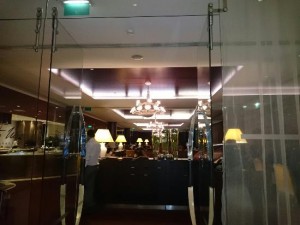TEMPREX®
 TEMPREX® heat treated protection glass (according to EN 12150 standard)
TEMPREX® heat treated protection glass (according to EN 12150 standard)
TEMPREX® is the final product when glasses undergo a heat process in which they are uniformly heated reaching a temperature higher than the softening point, about 700ºC, so that they suffer a sudden cooling on the surface, which causes a superficial layer under strong tensions. This layer gives the glass new properties which make it a different product from the original one.
By undergoing this heat process the glass acquires more 4 to 5 times of resistance than the original glass.
An important property of TEMPREX® is that, when it breaks, it scatters itself into pieces with a minimum capacity to cut, that’s why it is advisable in installation with breaking risk, as of in the automobile sector, sporting facilities, home and urban furniture, shower doors, etc.
TEMPREX® acquires the following characteristics:
• Greater resistance to thermal shock (thermal origin breakage).
• Greater mechanical resistance to compression.
• Greater resistance to flexion.
• Greater resistance to twist.
• Greater mechanical resistance to impact.
• Classified as a safety glass.
• Optic properties not affected by the process.
All mechanical intervention made in the glass, such as drillings, notches, edges, etc., must be done before the heat treatment takes place, once finished, any mechanical intervention would break the glass.
Applications
TEMPREX® acquires characteristics which make it ideal to install when there is no frame. By using very discreet options we can install almost everything only in glass, such as shop windows, wall partitions, table tops, shower doors, glass windbreak panels, etc.
HEAT SOAK TEST (according to EN 12150 standard EN 12150)
The glass is a material which is made of natural derived raw materials, such as sand, dolomite and calcite, some of them slowly decompose in the glass mass originating potential defects with a negative impact in the performance of the product. Others are the impurities of refractory material with which the glass melting furnace is made.
The so called “spontaneous breakage” is inherent to toughened glass.
This phenomenon can be described as the existence of nickel sulphide (NiS) occlusions, when heated above certain temperatures not very high, being excited to vibration, which leads to specific tensions in glasses and then causes “spontaneous breakage”.
The method recommended to prevent such toughened glass spontaneous breakage damage is to carry out the “HEAT SOAK TEST” before the installation, preventing in about 90% of cases the risk of spontaneous breakage.
The EN 14179-1 standard (concerning heat soak toughened glass) states the following in its introduction:
“Heat soaked thermally toughened soda lime silicate safety glass within which a permanent surface compressive stress has been induced in order to give it greatly increased resistance to mechanical and thermal stress and prescribed fragmentation characteristics and which has a known level of residual risk of spontaneous breakage due to the presence of critical nickel sulphide (NiS) inclusions”.
Design your solution, in case of any doubt, please contact our technical support.




